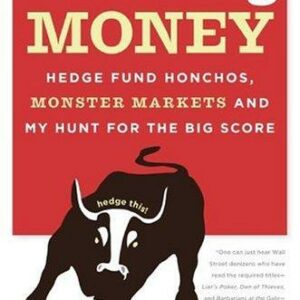Major Labels
$18.00
| Title | Range | Discount |
|---|---|---|
| Trade Discount | 5 + | 25% |
- Description
- Additional information
Description
One of Oprah Daily’s 20 Favorite Books of 2021 • Selected as one of Pitchfork‘s Best Music Books of the Year
“One of the best books of its kind in decades.” —The Wall Street Journal
An epic achievement and a huge delight, the entire history of popular music over the past fifty years refracted through the big genres that have defined and dominated it: rock, R&B, country, punk, hip-hop, dance music, and pop
Kelefa Sanneh, one of the essential voices of our time on music and culture, has made a deep study of how popular music unites and divides us, charting the way genres become communities. In Major Labels, Sanneh distills a career’s worth of knowledge about music and musicians into a brilliant and omnivorous reckoning with popular music—as an art form (actually, a bunch of art forms), as a cultural and economic force, and as a tool that we use to build our identities. He explains the history of slow jams, the genius of Shania Twain, and why rappers are always getting in trouble.
Sanneh shows how these genres have been defined by the tension between mainstream and outsider, between authenticity and phoniness, between good and bad, right and wrong. Throughout, race is a powerful touchstone: just as there have always been Black audiences and white audiences, with more or less overlap depending on the moment, there has been Black music and white music, constantly mixing and separating. Sanneh debunks cherished myths, reappraises beloved heroes, and upends familiar ideas of musical greatness, arguing that sometimes, the best popular music isn’t transcendent. Songs express our grudges as well as our hopes, and they are motivated by greed as well as idealism; music is a powerful tool for human connection, but also for human antagonism. This is a book about the music everyone loves, the music everyone hates, and the decades-long argument over which is which. The opposite of a modest proposal, Major Labels pays in full.
Vox‘s Top Fall Books Not to Miss • A holiday gift guide pick from The Boston Globe, Mental Floss, and Paste
“Major Labels [is] ecumenical and all-embracing. . . . [Sanneh] has a subtle and flexible style, and great powers of distillation. . . . The best thing about Sanneh may be that he subtly makes you question your beliefs.” —New York Times
“Sanneh brings a contagious zeal for genres and cross-fertilizations to artists and records that are now playlists for an increasingly diverse America.” —Oprah Daily
“Mr. Sanneh, a staff writer for the New Yorker, gets high marks both for his encyclopedic knowledge and his breadth of taste. He also writes like an angel, making Major Labels one of the best books of its kind in decades.” —Wall Street Journal
“For readers who love it all, there’s Kelefa Sanneh’s Major Labels: A History of Popular Music in Seven Genres, which covers everything from disco to pop to rap music, all explored with sparkling wit and enthusiasm. Sanneh, a staff writer for the New Yorker, is not only on the music beat, but he’s an active fan (his essay there recently about growing up punk is not to be missed) and it shows in this immensely engaging book.” —Kate Tuttle, The Boston Globe
“As a guide to the erosion of fervent musical loyalties that seems to be under way, few could have better credentials than the New Yorker staff writer Kelefa Sanneh, who has published a delightfully provocative new book, Major Labels.” —The Atlantic
“Full of clear, concise writing about Boy George and George Strait, Run-DMC and the Beastie Boys, Kacey Musgraves and Casey Kasem . . . If you need a clear explanation of how Detroit techno and Chicago house helped give birth to British rave culture, it’s here, as are pithy insights on familiar superstars . . . a formidable feat of cogent analysis.” —Philadelphia Inquirer
“One of the most essential writers of music criticism working today. . . . Sanneh is an ideal guide for this journey, with a purist’s depth of knowledge and a gourmand’s indiscriminate love of the medium . . . perfectly fascinating.” —Vox
“Kelefa Sanneh has achieved the impossible. Major Labels somehow manages to unspool everything you need to know about 50 years of music, but more impressively, he makes you care about all of it. Even the stuff you don’t care about. It’s funny, it’s personal and as a piece of writing, the book borders on poetry.” —David Letterman
“A beautifully observed history of the last 50 years of music. It f****ing rules, and I recommend it without reservation.” —Tom Breihan, Stereogum
“A charming stroll through our sometimes useful, sometimes debilitating compartmentalizing of sounds. The point is not another survey of familiar classics, but rather, a far more ambitious consideration of how styles fuse and expand—in ways audiences often aren’t comfortable accepting.” —Chicago Tribune Fall Book Preview
“An essential document from an inimitable critic.” —Vulture
“This is quite simply a perfect book for any music lover and an ideal primer on the last 50 years of popular music in the United States. It’s written not in the voice of a music critic but that of a deeply engaged and passionate listener . . . A thoroughly enjoyable and perceptive book that champions the art of popular music.” —Library Journal (starred review)
“[A] thrilling debut . . . Equally fascinating are Sanneh’s insights into the way race has shaped music, particularly in the overlapping worlds of R&B and rock ’n’ roll. This remarkable achievement will be a joy to music lovers, no matter what they prefer to listen to.” —Publishers Weekly (starred review)
“Kelefa Sanneh takes a very ambitious swing with this deep dive into a half century of American music . . . As both an engine of commerce and the driving force behind myriad cultural shifts, popular music has shaped American society in ways we can only begin understand. But it would be hard to find a better guide than Sanneh to help us try.” —LitHub
“There have been many attempts at explaining the modern trajectory of pop music, but Major Labels is quite possibly the best version I’ve ever read. Kelefa Sanneh is pure talent: an engaging, efficient writer with insightful observations and an openness of mind other critics only pretend to possess. I’m sure other people will attempt to publish books like this in the future, but they probably don’t need to. They should just read this one.” —Chuck Klosterman
“Kelefa Sanneh is somehow able to stand back and give the most clearheaded thoughts about the Big Picture while also diving in for the entertaining, memorable detail. Major Labels is a completely enjoyable history that told me a thousand things I didn’t know and—one of the book’s great pleasures—made me see lots of musicians I thought I knew, or half-knew, in a whole new light.” —Ira Glass, host of This American Life
“A lively, heartfelt exploration of the many worlds of popular music. . . . Throughout, the author shows himself to be a master of the mot juste . . . but it’s clear that he’s listened to just about everything with ears and mind wide open. A pleasure—and an education—for any music fan.” —Kirkus (starred review)
“Major Labels is the most elegant history of popular music ever written. That may sound like faint praise to those who want their pop criticism to channel raw passion, yet passion comes in many forms. Sanneh not only delivers a coolly dazzling overview of the battlefields of genre but also revels open-heartedly in the music itself, his taste unbound by dogma or prejudice. The operative word is keen: zealous in spirit, exact in execution, ferociously acute from the first sentence to the last.” —Alex Ross, music critic of The New Yorker and author of WagnerismKelefa Sanneh has been a New Yorker staff writer since 2008, before which he spent six years as a pop-music critic at The New York Times. He is also a contributor to CBS Sunday Morning. Previously, he was the deputy editor of Transition, a journal of race and culture based at the W. E. B. Du Bois Research Institute at Harvard University. His writing has also appeared in a number of magazines and a handful of books, including Shake It Up: Great American Writing on Rock and Pop from Elvis to Jay Z, a Library of America Special Publication, and Da Capo Best Music Writing (2002, 2005, 2007, and 2011). He lives in New York City with his family.
1.
ROCK
The Kingdom of Rock ‘n’ Roll
One evening in 1962, a thirteen-year-old girl named Pamela was pleased to see, on her television, a twenty-two-year-old man from the Bronx called Dion DiMucci. He was the former lead singer of Dion and the Belmonts, and a preeminent teen idol-one of the biggest stars in rock ‘n’ roll. The girl was more than pleased, in fact. “DION!!!” she wrote in her diary. “Oh Help!!! I’m so excited, I think I’ll just DIE!!! I was runnin’ around, chokin’ and cryin’ and yellin’ and screamin’.”
Like many American teenagers in the 1960s, Pamela was obsessed with rock stars. And as she grew older, her obsession grew more intense, in tandem with the increasing intensity of its objects. A few years after Dion came the Beatles, and in particular Paul McCartney. “Every day I sent Paul a retardedly corny poem written on an aerogram and sealed with a kiss,” she recalled. She had a particularly vivid memory of a Paul McCartney trading card emblazoned with a photograph that some other fans might have considered infelicitous. “You could actually see the shape of his balls being crushed by the tightness of his trousers,” she later recalled. She and her similarly besotted friends called themselves the Beatlesweeties, and they composed romantic Beatlecentric stories for one another, imagining themselves into the Beatleish lives of their idols.
But Pamela soon discovered that she was sweeter still on someone else: Mick Jagger, from the Rolling Stones, whom she and her friends had always found “dirty” and “sloppy”; now she was discovering that these qualities were no longer so off-putting. “With my precious Paul, I never really got past the hoping stage, but now I dared to imagine Mick with his widewale corduroy trousers down around his ankles,” she remembered. Her diary entries recorded her fantasies, which were becoming distinctly physiological. “Someday I will touch and feel him, I know it,” she wrote. “Mick, my dear, dear PENIS!”
The young diarist eventually turned her passion for rock stars into a lifestyle, and then a literary career. She is Pamela Des Barres, and in 1987 she included those diary entries in her first book, I’m with the Band: Confessions of a Groupie. The title is accurate enough: Des Barres was for years a leading light in the Los Angeles rock ‘n’ roll scene, and her adult life turned out to be even more interesting than her girlhood diary. (Her Jagger prediction, for example, proved accurate soon enough.) But the true subject of her book was rock stardom itself. Few people have ever written as insightfully, or as sympathetically, about the peculiar enthusiasm that gives the genre of rock ‘n’ roll its mythic reputation, or about the complicated bond that unites performers and fans-and, just as important, divides them. Often in the book, Des Barres and her idols seem to be trying to figure out exactly how they are supposed to relate to each other. After all, Des Barres was not just a fan but a minor celebrity, and also a recording artist: a member of the GTOs, or Girls Together Outrageously, a rock ‘n’ roll performance-art troupe that released an album on an imprint owned by Frank Zappa, the rock eccentric who served as their mentor. Still, she was clear-eyed about the seductive power of rock stardom, and about the corresponding imbalance of power in many of the relationships she had. “I wondered if I was going steady with the best guitar player in the world,” she thought while she was dating Jimmy Page, from Led Zeppelin. As part of the arrangement, she was expected to listen to the band’s forthcoming album:
On his day off, we stayed in my bedroom, listening to the test pressing of Led Zeppelin II over and over again while he took reams of notes. I had to comment on every solo, and even though I believed the drum solo in “Moby Dick” went on endlessly, I held my tongue and went on pressing his velvet trousers and sewing buttons onto his satin jacket.
By the time Des Barres published her book, the rules of this world had been codified. It was 1987, and MTV was thriving, fueled by a particularly glamorous and decadent form of rock ‘n’ roll that came to be known as hair metal. Even people with no interest in rock ‘n’ roll had a pretty good idea by then of how rock stars were supposed to look and act. Rock stars outlived the Los Angeles scene that Des Barres chronicled, and they outlived the eighties, too. By the 2010s, the term “rock star” was commonly used to describe mildly quirky CEOs, faintly charismatic politicians, slightly unconventional athletes, and sometimes-although not so often-professional musicians. Sometimes it seemed as if “rock star,” as a description or a general term of praise, had left the genre itself behind. A song called “Rockstar,” by Post Malone featuring 21 Savage, was one of the biggest hits of 2017, and an entirely different and unrelated song called “Rockstar,” by DaBaby featuring Roddy Ricch, was one of the biggest hits of 2020. Both tracks were about rock stardom as a form of celebrity or a state of mind. (Post Malone declared, “I feel just like a rockstar,” while DaBaby asked, “Have you ever met a real nigga rockstar?”) And both tracks were hip-hop-not rock ‘n’ roll.
In the late sixties, though, rock stars were new. So new, in fact, that they didn’t really have a name yet. The term “rock star” is mostly absent from Des Barres’s book, even though rock stardom is her subject; in one typical diary entry, written in the early months of 1970, she refers to her world, instead, as the “pop-star circle,” not the “rock-star circle.” Rolling Stone, which was the rock ‘n’ roll publication of record for many decades, didn’t regularly use the term until the 1970s. The first prominent occurrence of “rock star” in The New York Times came on October 5, 1970, in a front-page headline: janis joplin dies; rock star was 27. (The term was not used exclusively; the accompanying article described Joplin, variously, as a “rock singer” and a “pop singer.”) The deaths of Joplin and Jimi Hendrix, in 1970, and then Jim Morrison, from the Doors, in 1971, helped to popularize the idea of rock stardom, reinforcing the link between rock music and drugs and alcohol, while also fostering the impression that the life of a rock star was wild and dangerous and, as a consequence, quite possibly short.
The rock-star era started around the time that Des Barres’s diary was growing more explicit, at the end of the 1960s. And her evolving tastes tracked the genre’s evolving sense of itself. Dion and McCartney, her early favorites, were not rock stars, in the modern sense, but she threw them over for Jagger, Page, and others, who certainly were. Many listeners thought they heard something changing, as the rock ‘n’ roll sixties gave way to the rock-star seventies. When McCartney released his second solo album, Ram, in 1971, Rolling Stone published a despairing review by the critic Jon Landau, who called it “incredibly inconsequential” and “monumentally irrelevant,” a sign of cultural decline. He argued that Ram represented “the nadir in the decomposition of Sixties rock thus far,” confirming what the breakup of the Beatles had suggested. “These days groups are little more than collections of solo artists,” he wrote. “The idea of a group as a unit with an identity of its own has become increasingly passŽ.”
By the time Joplin was memorialized as a “rock star” on the front page of the Times, the music had already shed some of its older associations. In the fifties, Elvis Presley’s paradigm-changing rock ‘n’ roll records had been so broadly popular that they appeared atop the pop, R&B, and country charts simultaneously. But the path of rock ‘n’ roll grew more singular. In the fifties, rock ‘n’ roll split from country; in the sixties, it split from R&B; and in the seventies, it split from pop, developing its own media and its own benchmarks. Now rock ‘n’ roll bands were being judged by their albums, not their singles; record and ticket sales, not pop-chart performance, determined which bands were on top. (“Stairway to Heaven,” arguably the definitive Led Zeppelin song, helped the group sell tens of millions of copies of Led Zeppelin IV, even though the track wasn’t released as a single.) At the same time, though, the music was splintering, attracting a host of new modifiers that threatened to turn the genre into a collection of subgenres: acid rock, soft rock, folk rock, progressive rock, arena rock, art rock, punk rock. In 1977, when Presley died, one of his many obituaries was written by the critic Lester Bangs, who generally savored the increasing weirdness and rudeness of rock music, and who was predictably contemptuous of Presley’s late-career incarnation as a Las Vegas oldies act. Bangs compared Presley, unfavorably, to Hendrix and Joplin, and, more favorably, to the Pentagon, which was not a band but the headquarters of the US Department of Defense. Each, he wrote, was “a giant armored institution,” hailed for its “legendary” power. “Obviously we all liked Elvis better than the Pentagon,” Bangs continued, “but look at what a paltry statement that is.” Even as he mocked Presley, though, Bangs found himself missing the so-called King of Rock ‘n’ Roll, because he missed the days when the kingdom of rock ‘n’ roll had been coherent enough to have a so-called king. “I can guarantee you one thing: we will never again agree on anything as we agreed on Elvis,” he wrote. “So I won’t bother saying good-bye to his corpse. I will say good-bye to you.”
In the 1970s, many musicians and listeners seemed to share Landau’s and Bangs’s sense that rock ‘n’ roll was decomposing or disintegrating. And many of them responded by doubling down, insisting that rock ‘n’ roll was not merely a musical category but an identity, a flag to wave. There was a rash of rock ‘n’ roll songs about rock ‘n’ roll, which tended to be rather nostalgic. “American Pie,” the 1971 hit by Don McLean, was a wistful eulogy for the good old days of rock ‘n’ roll-but so, too, was Led Zeppelin’s “Rock and Roll,” which was released the same year. (“It’s been a long time since the ‘Book of Love,'” roared Robert Plant, paying thunderous tribute to an oldie from 1957.) Sometimes these rock stars seemed to be delivering backhanded compliments to the genre they were supposed to love. “I remember when rock was young,” Elton John sang in “Crocodile Rock,” adding that “the years went by and rock just died”; the sweet, fifties-inspired tune helped sweeten a rather sour tale of cultural decline. “Long Live Rock,” by the Who, from 1974, followed its puffed-up title with a deflating afterthought: “Long live rock-be it dead or alive.” And Mick Jagger offered the aging genre an affectionate shrug: “I know it’s only rock ‘n’ roll, but I like it.”
The defining attribute of rock ‘n’ roll in the seventies was self-consciousness, and in this sense the seventies never ended. Self-conscious rock ‘n’ roll turned out to be surprisingly versatile, and surprisingly durable. Ever since the seventies, rock bands have had to find ways to acknowledge their allegiance to a genre that is not at all young and not at all dead. And ever since the seventies, virtually every rock ‘n’ roll movement has portrayed itself as a kind of reformation, on a mission to revive the spirit of some golden age, real or imagined. Generations of musicians and listeners have viewed “rock” as an identity worth fighting over, which has created a never-ending debate over what constitutes “real” rock. Unlike country music, which sanctified rural white lifestyles, or R&B, which catered to multigenerational Black listeners, rock ‘n’ roll does not generally derive its identity from the demographics of its audience. (It may be the case that white suburban dads, for instance, are disproportionately likely to love rock music these days. But rock bands cannot earn credibility by bragging about their popularity among white suburban dads.) Instead, rock ‘n’ roll has endured as a musical tradition that successive generations have engaged with-it is the most traditional, perhaps, of any major pop genre. It is also the most spiritual. Rock ‘n’ roll is regularly described not as a set of practices or a particular sound but as a presence, emerging anywhere there are true believers, in rough accordance with the formula that Jesus gave to his disciples: “Where two or three are gathered together in my name, there am I.”
If rock ‘n’ roll is an eternal spirit, then it must also be eternally itself-capable of being revived but not fundamentally changed, despite the progression of new styles and poses. One of the most effective revivalists over the years has been Bruce Springsteen, who was a bit of a throwback even when he first emerged, in 1973. He understood that “rock star” was both a job and a character. (“I know your mama, she don’t like me ’cause I play in a rock ‘n’ roll band,” he sang in “Rosalita.”) This enthusiasm for rock ‘n’ roll history is part of what made him prescient: he realized that, from the seventies onward, the future of rock ‘n’ roll would belong to the past. (“There is no future in rock ‘n’ roll,” Mick Jagger said in 1980. “It’s only recycled past.”) Springsteen became a top-of-the-heap rock star in 1975 with the release of Born to Run, an album that put him on the cover of both Time (rock’s new sensation) and Newsweek (making of a rock star). And then Springsteen did something even more impressive: he remained a rock star, enduring for decades as one of the most popular singers in the country, and one of the most reliable ticket sellers. He was still among the biggest names in rock in 2017, when at the age of sixty-eight, he began a solo theatrical residency, singing songs and telling stories in a Broadway theater, five nights a week, for more than a year. Even without his band, he played the part of rock ‘n’ roll true believer, sometimes waxing sermonic between songs. “There is no love without one plus one equaling three,” he exclaimed during the show. “It’s the essential equation of art, it’s the essential equation of rock ‘n’ roll.” He chuckled at his own teenage faith in rock ‘n’ roll and marveled at how little had changed since then. “It’s the reason true rock ‘n’ roll-and true rock ‘n’ roll bands-will never die!”
Abunchanoise
Over the course of 1970, the Beatles released their final album, Let It Be, all four members released solo albums, and, on December 31, Paul McCartney began the legal process that culminated in the official breakup of the band. As a consequence, some listeners began to consider a question that probably sounded reasonable then, although it sounds very unreasonable now: Who would be the next Beatles? Many of the proposed answers were rather far-fetched, even back then. There was Badfinger, known for spirited and catchy rock songs; the band’s strongest claim to Beatleness was its status as the first band signed to Apple Records, the Beatles’ label. (Badfinger had a handful of hits but never ascended to the rock ‘n’ roll elite.) In 1976, a band called Klaatu released an album with so little information, and so many Beatlesy flourishes, that a number of listeners grew convinced that the band was the Beatles in disguise. (Klaatu, as people soon discovered, was a progressive-rock band from Canada, now best remembered for “Calling Occupants of Interplanetary Craft,” a curiously affecting space ballad that became a minor pop hit when it was covered by the Carpenters.) But there was one act that tried to follow in the Beatles’ footsteps and, in some ways, succeeded-selling out Shea Stadium in Queens, even more quickly than the Beatles had, and becoming for a time one of the most popular bands in America.
US
Additional information
| Weight | 14.4 oz |
|---|---|
| Dimensions | 1.2500 × 5.4400 × 8.3800 in |
| Imprint | |
| ISBN-13 | |
| Author | |
| Audience | |
| BISAC | |
| Subjects | popular books, gifts for him, gifts for musicians, music book, music gifts, gifts for her, music biographies, books about music, music history book, gifts for teen girls, gifts for teen boys, rock and roll books, history of rock and roll, music history books, rock biographies, country music book, pop music book, history books, gifts for dad, MUS035000, music, Rap, rock and roll, Rock music, gifts for men, gifts for women, gift, history of music, major, music books, music history, gifts for music lovers, progressive rock, MUS029000 |
| Format |











